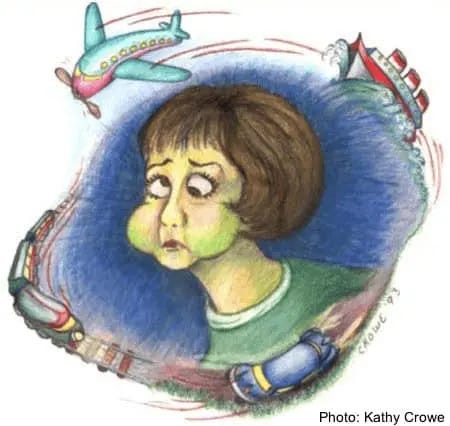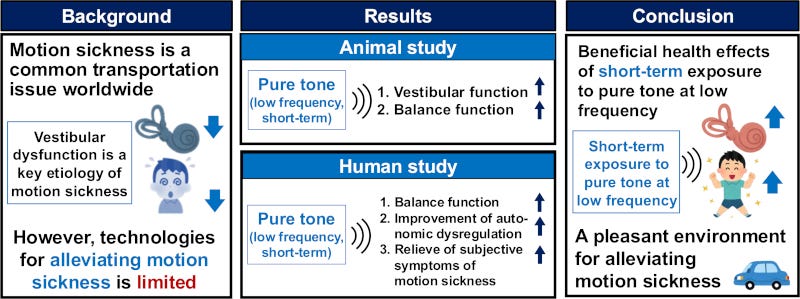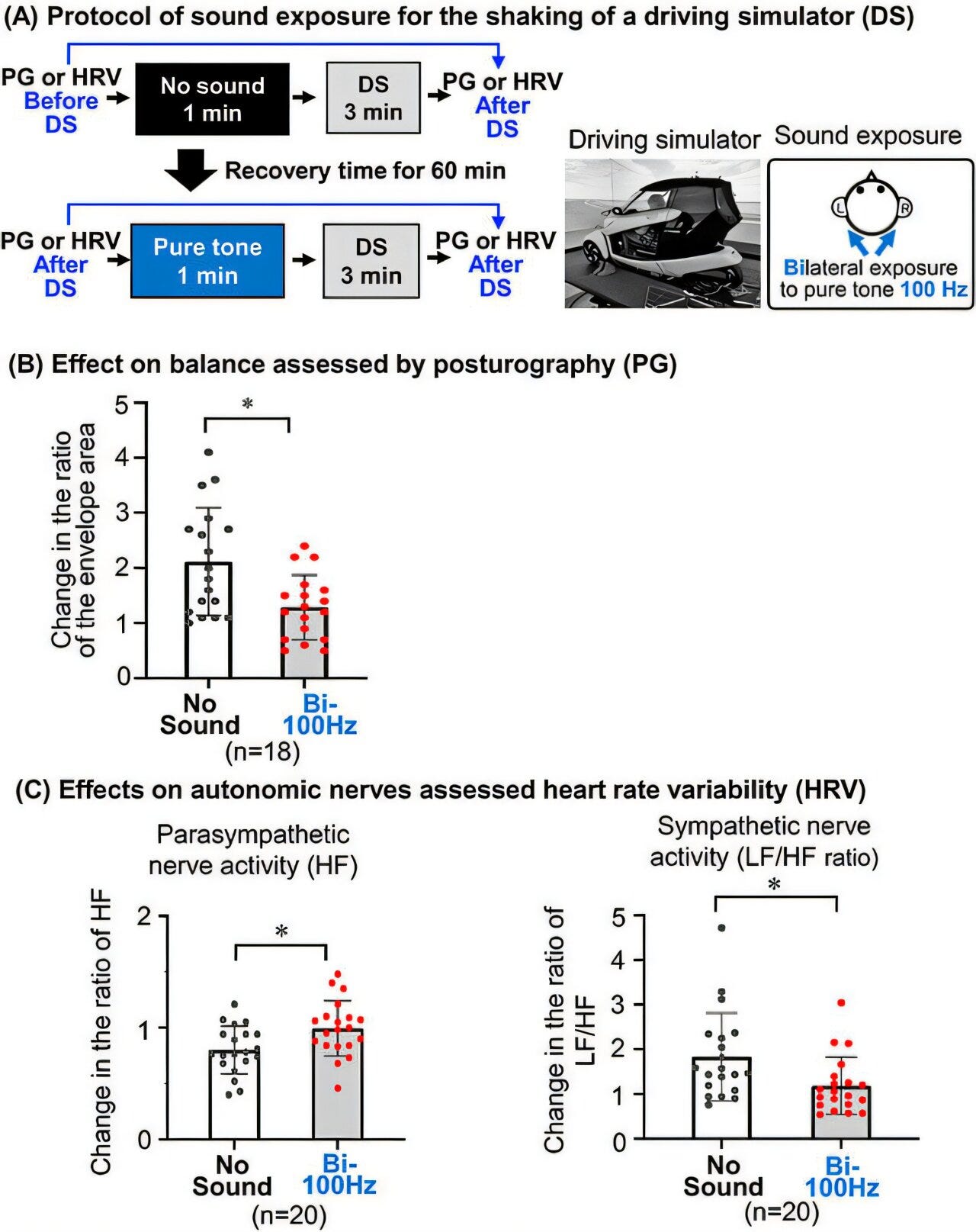My past newsletter described ways in which vibrations can benefit the body, rendering relief.
Good Vibrations
The medical truthers who resist all the mandates and refuse to don the face diapers cannot get any care at all in the state of Massachusetts. One must travel to other regions of the USA to seek some relief.
Now we can add the vestibular dysfunction of Motion Sickness to that list.
Motion Sickness Soothed with 100 herz
[Acupressure helps you feel better. Mild nausea may improve when you press on pressure point P-6. It is the groove between the two tendons on the inside of your wrist that start at the base of your palm. - https://www.mountsinai.org/health-library/special-topic/nausea-and-acupressure ]
A recent study looked at using sound vibrations to ease the symptoms of motion sickness. Using both a mouse model and humans, researchers found that sound at 100 Hz was the optimal frequency. These vibrations stimulate the otolithic organs in the inner ear. The stimulation seems to activate the vestibular system, maintaining balance and spatial orientation.
Background: Motion sickness is a common transportation issue worldwide. Vestibular dysfunction has been reported to be a key etiology of motion sickness. However, there are limited technologies for alleviating motion sickness. Methods: The most appropriate frequency (Hz) and level (dBZ) of pure tone for modulation of vestibular function were determined by an ex vivo study using murine utricle explants. The preventive effects of the selected pure tone on motion sickness were then confirmed by using a beam balance test in mice. The alleviating effects of pure tone on motion sickness induced by a swing, driving simulator or real car were objectively assessed by using posturography and electrocardiography (ECG) and were subjectively assessed by using the Motion Sickness Assessment Questionnaire (MSAQ) in humans. Results: The effect of short-term (≤5 min) exposure to a pure tone of 80–85 dBZ (= 60.9–65.9 dBA) at 100 Hz on motion sickness was investigated in mice and humans. A mouse study showed a long-lasting (≥120 min) alleviative effect on shaking-mediated exacerbated beam test scores by 5-min exposure to a pure tone of 85 dBZ at 100 Hz, which was ex vivo determined as a sound activating vestibular function, before shaking. Human studies further showed that 1-min exposure to a pure tone of 80–85 dBZ (= 60.9–65.9 dBA) at 100 Hz before shaking improved the increased envelope areas in posturography caused by the shakings of a swing, a driving simulator and a vehicle. Driving simulator-mediated activation of sympathetic nerves assessed by the heart rate variable (HRV) and vehicle-mediated increased scores of the MSAQ were improved by pure tone exposure before the shaking. Conclusion: Since the exacerbated results of posturography and HRV reflect shaking-mediated imbalance and autonomic dysfunction, respectively, the results suggest that the imbalance and autonomic dysregulation in motion sickness could be improved by just 1-min exposure to a pure tone with daily exposable sound pressure levels. Trial registration: Registration number: UMIN000022413 (2016/05/23–2023/04/19) and UMIN000053735 (2024/02/29–present)
REFERENCES
Y Gu, et al. Just 1-min exposure to a pure tone at 100 Hz with daily exposable sound pressure levels may improve motion sickness. Environmental Health and Preventive Medicine (2025). DOI: 10.1265/ehpm.24-00247









One minute is about all I could take :-)